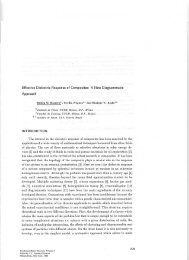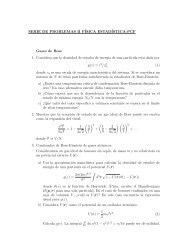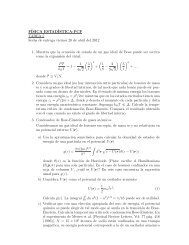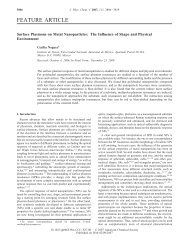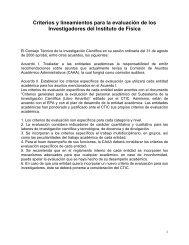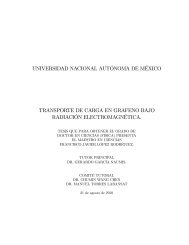Intel(R) - Computational and Systems Biology at MIT
Intel(R) - Computational and Systems Biology at MIT
Intel(R) - Computational and Systems Biology at MIT
You also want an ePaper? Increase the reach of your titles
YUMPU automatically turns print PDFs into web optimized ePapers that Google loves.
Tips <strong>and</strong> Techniques to Improve PerformanceManaging Performance <strong>and</strong> Memory 6To obtain the best performance with <strong>Intel</strong> MKL, follow the recommend<strong>at</strong>ions given in thesubsections below.Coding TechniquesTo obtain the best performance with <strong>Intel</strong> MKL, ensure the following d<strong>at</strong>a alignment in yoursource code:• arrays are aligned <strong>at</strong> 16-byte boundaries• leading dimension values (n*element_size) of two-dimensional arrays are divisibleby 16• for two-dimensional arrays, leading dimension values divisible by 2048 are avoided.LAPACK packed routinesThe routines with the names th<strong>at</strong> contain the letters HP, OP, PP, SP, TP, UP in the m<strong>at</strong>rixtype <strong>and</strong> storage position (the second <strong>and</strong> third letters respectively) oper<strong>at</strong>e on them<strong>at</strong>rices in the packed form<strong>at</strong> (see LAPACK "Routine Naming Conventions" sections in the<strong>Intel</strong> MKL Reference Manual). Their functionality is strictly equivalent to the functionality ofthe unpacked routines with the names containing the letters HE, OR, PO, SY, TR, UN in thecorresponding positions, but the performance is significantly lower.If the memory restriction is not too tight, use an unpacked routine for better performance.Note th<strong>at</strong> in such a case, you need to alloc<strong>at</strong>e N 2 /2 more memory than the memoryrequired by a respective packed routine, where N is the problem size (the number ofequ<strong>at</strong>ions).For example, solving a symmetric eigenproblem with an expert driver can be speeded upthrough using an unpacked routine:call dsyevx(jobz, range, uplo, n, a, lda, vl, vu, il, iu, abstol, m, w,z, ldz, work, lwork, iwork, ifail, info),where a is the dimension lda-by-n, which is <strong>at</strong> least N 2 elements, instead ofcall dspevx(jobz, range, uplo, n, ap, vl, vu, il, iu, abstol, m, w, z,ldz, work, iwork, ifail, info),where ap is the dimension N*(N+1)/2.FFT functionsThere are additional conditions to gain performance of the FFT functions.6-13




